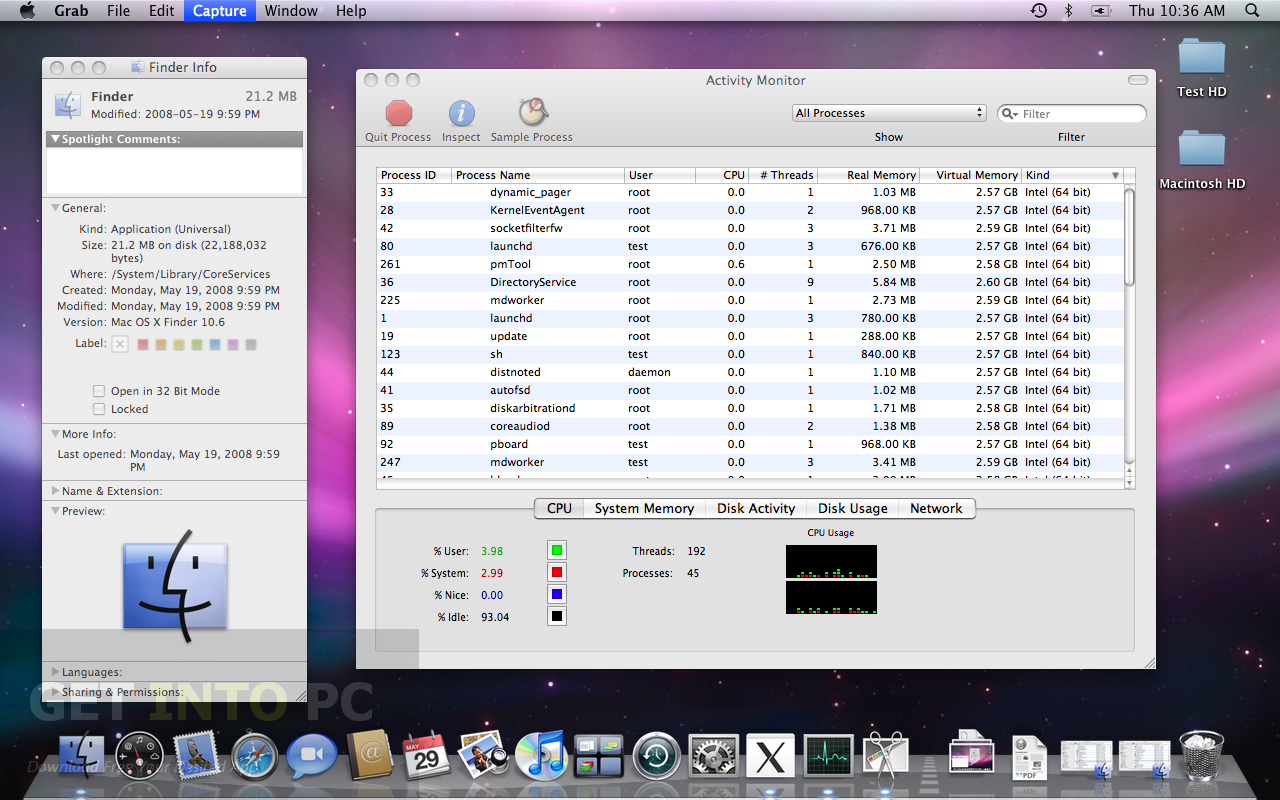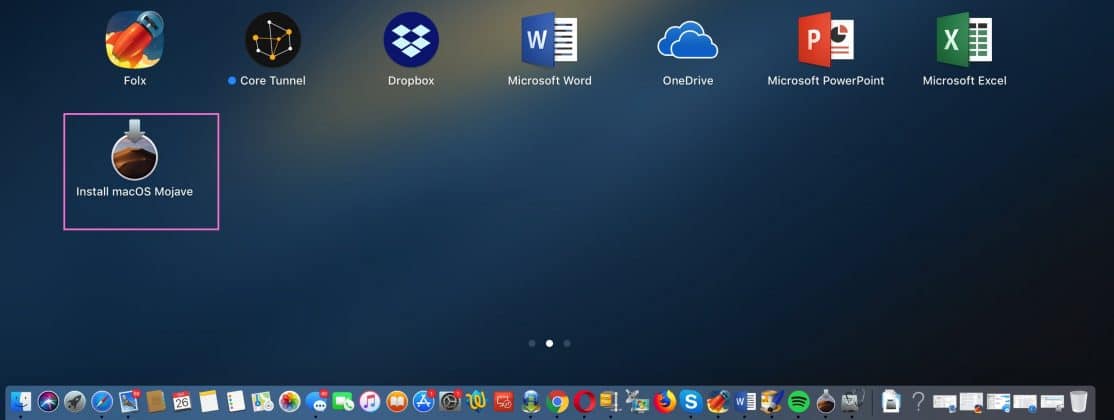- Mac Os X Download Iso
- Mac Os software, free download
- Mac Os Iso Download For Vmware
- Mac Os Download Iso Software Installer
- Mac Os Download Iso Software Windows 10
- Download Mac Os Lion Iso
These advanced steps are primarily for system administrators and others who are familiar with the command line. You don't need a bootable installer to upgrade macOS or reinstall macOS, but it can be useful when you want to install on multiple computers without downloading the installer each time.
Mac Os X Download Iso
Download macOS
Find the appropriate download link in the upgrade instructions for each macOS version:
Download Windows 10 Disc Image (ISO File) Before updating, please refer to the Windows release information status for known issues to confirm your device is not impacted. Mac OS 9 9.0. Mac OS 9.x, based on Mac OS 8 was the final product based on the classic MacOS architecture. Like previous version, it lacks true protected memory or pre-emptive multitasking. MacOS 9 was abandoned in favor of of the Unix-ish NextStep/Openstep based Mac OS X. Running MacOS 9 requires a supported Power PC based Macintosh (see the compatibility matrix), or the following.
macOS Catalina, macOS Mojave, ormacOS High Sierra
Installers for each of these macOS versions download directly to your Applications folder as an app named Install macOS Catalina, Install macOS Mojave, or Install macOS High Sierra. If the installer opens after downloading, quit it without continuing installation. Important: To get the correct installer, download from a Mac that is using macOS Sierra 10.12.5 or later, or El Capitan 10.11.6. Enterprise administrators, please download from Apple, not a locally hosted software-update server.
OS X El Capitan
El Capitan downloads as a disk image. On a Mac that is compatible with El Capitan, open the disk image and run the installer within, named InstallMacOSX.pkg. It installs an app named Install OS X El Capitan into your Applications folder. You will create the bootable installer from this app, not from the disk image or .pkg installer.
Use the 'createinstallmedia' command in Terminal
- Connect the USB flash drive or other volume that you're using for the bootable installer. Make sure that it has at least 12GB of available storage and is formatted as Mac OS Extended.
- Open Terminal, which is in the Utilities folder of your Applications folder.
- Type or paste one of the following commands in Terminal. These assume that the installer is still in your Applications folder, and MyVolume is the name of the USB flash drive or other volume you're using. If it has a different name, replace
MyVolumein these commands with the name of your volume.
Catalina:*
Mojave:*
High Sierra:*
El Capitan: - Press Return after typing the command.
- When prompted, type your administrator password and press Return again. Terminal doesn't show any characters as you type your password.
- When prompted, type
Yto confirm that you want to erase the volume, then press Return. Terminal shows the progress as the bootable installer is created. - When Terminal says that it's done, the volume will have the same name as the installer you downloaded, such as Install macOS Catalina. You can now quit Terminal and eject the volume.
* If your Mac is using macOS Sierra or earlier, include the --applicationpath argument, similar to the way this argument is used in the command for El Capitan.
Use the bootable installer
After creating the bootable installer, follow these steps to use it:
- Plug the bootable installer into a compatible Mac.
- Use Startup Manager or Startup Disk preferences to select the bootable installer as the startup disk, then start up from it. Your Mac will start up to macOS Recovery.
Learn about selecting a startup disk, including what to do if your Mac doesn't start up from it. - Choose your language, if prompted.
- A bootable installer doesn't download macOS from the Internet, but it does require the Internet to get information specific to your Mac model, such as firmware updates. If you need to connect to a Wi-Fi network, use the Wi-Fi menu in the menu bar.
- Select Install macOS (or Install OS X) from the Utilities window, then click Continue and follow the onscreen instructions.
Learn more
For more information about the createinstallmedia command and the arguments that you can use with it, make sure that the macOS installer is in your Applications folder, then enter this path in Terminal:
Catalina:
Mojave:
High Sierra:
El Capitan:
MAC OS X El Capitan ISO: Software Information.
- Software name: Mac OS X El Capitan ISO.
- Type of Setup: Offline/Standalone full Setup.
- Developer:Apple (Lone Author).
Mac Os software, free download
Minimum requirement for Mac OS X El Capitan ISO.
Before downloading it is always good to have a look at the requirements so that you don’t have to waste your data and time. The system requirements for your mac product to support Mac OSX El Capitan are:
- Mac computer with Mac OS X v10.6.8 or later pre installed
- 2GB of RAM
- 8.8GB of available storage space.
- A compatible internet connection may be required for some features.
- An Apple ID may be required for some features.
Key features of Mac OS X El Capitan ISO.
- Major improvements to user experience and performance
- Addition of Metal graphics technology for faster launching of apps
- New and revamped Mission Control with split view function
- Natural Language processing support in Spotlight search
- New gestures for Mail and Calendar apps
- More third party extension support in photos application.
- Brand new Notes app with checklists, safari webpages, maps and other attachments.
Download Mac OS X El Capitan .iso installation files directly.
You can directly download MAC OS X El Capitan .iso files from the links given below:


Mac Os Iso Download For Vmware
Download Mac OS X El Capitan (10.11) DMG file for free.
Mac OS X El Capitan (10.11) update setup file for free.
Mac OS X El Capitan: Overview.
Mac OS X El Capitan was a major update introduced by Apple. In this update, Apple added metal graphics processing methods which allowed for faster graphical performance of apps in MacOS. It included under the hood performance improvements, new natural language processing and AI support for spotlight searches and much more. It built upon the design changes of its predecessor: Mac OS X Yosemite. In fact, its name is really significant as El Capitan is the name of one of the most popular rock formations at Yosemite national park and it signifies that this version of Mac had more under the hood changes to the previous version that is Mac OS X Yosemite. This follows the similar naming convention Apple has followed for previous versions of Mac that contained updates to their predecessor like Lion / Mountain Lion and Leopard / Snow Leopard. In this version, Apple built upon the graphical changes brought upon in Mac OS X Yosemite and focused on the areas on user experience and performance. This version of Mac also came with the new Metal Graphics technology which made activities like launching apps significantly faster than before.
How to install Mac OS X El Capitan.
After going through all the technical specifications and amazing quality learning about Mac, it is time to try it by yourself. The download link has been provided below, use them to get started.
Mac Os Download Iso Software Installer
- Download the OS X 10.11 ISO/DMG files.
- Convert the DMG files to ISO files.
- Now burn the ISO files in bootable DVD.
- Now you have the boot disk.
- Now go to the boot menu and install the Mac OS X El Capitan ISO on your PC.
If there occurs any problem then you can also refer to the demo video provided below.

Mac Os Download Iso Software Windows 10
FINAL WORDS.
The Mac OS X El Capitan was one of the best OS ever created by Apple. A lot of efforts had been made in order to get it done. Following a months-long beta testing period, OS X El Capitan was released to the public on Wednesday, September 30, 2015. The new version built upon the features on its predecessor Mac OS X Yosemite and focused on User Experience and Under the hood performance. This version of MacOS was a big hit after it hit the online shelves i.e. the Mac App Store.
Tags: #iso#mac#OS
- ...